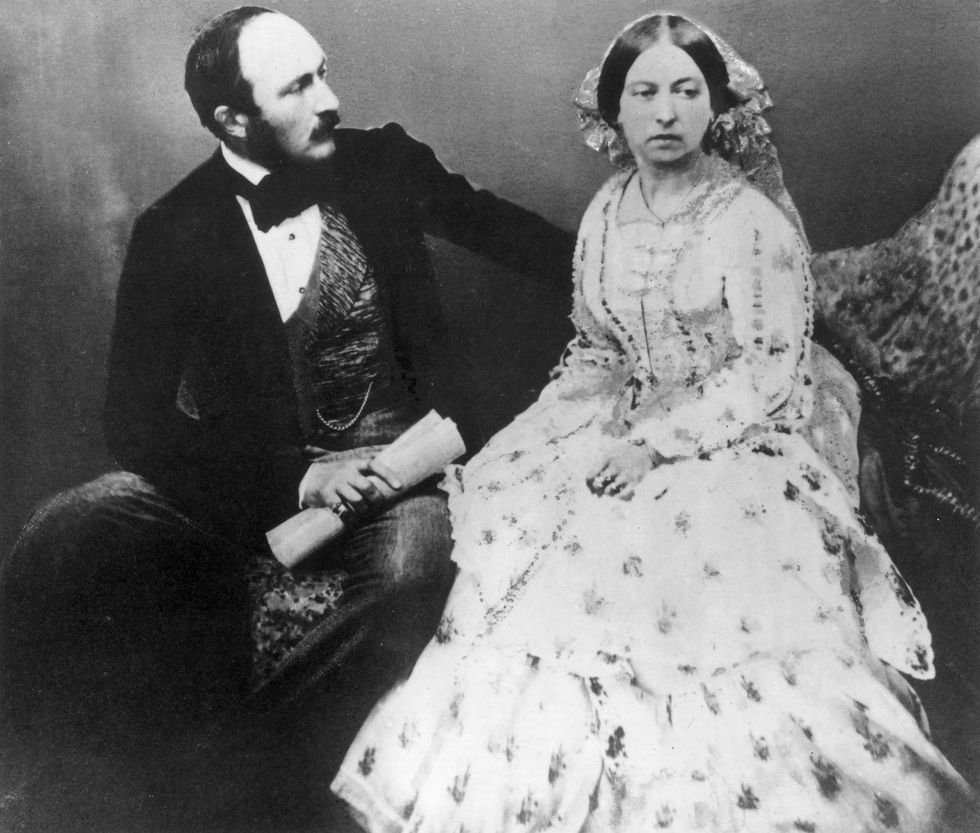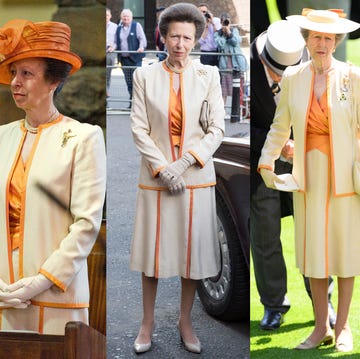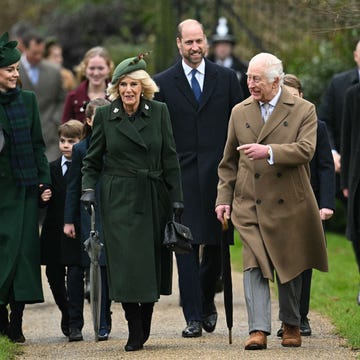On February 10, 1840, two 20-year-old cousins, Queen Victoria and Prince Albert, were married at St. James’s Palace in London. Their royal romance, including Victoria’s profound grief and semi-permanent mourning following his premature death, has been well-documented in books, films and television programs. Less examined is Victoria’s relationship with her children, influenced by her own upbringing, which led an intermingled cycle of familial love and dysfunction.
Victoria and Albert both had difficult childhoods
The youngest of two children born to the Grand Duke of Saxe-Coburg-Saalfeld, Albert’s childhood was marred by his parents' turbulent relationship. He developed a protective bond with his elder brother, and the two grew even closer after his mother was exiled from court following an affair when Albert was just five. He never saw his mother again, and she died just days after his 12th birthday, leaving him with a profound sense of loss.
Victoria, born several months before Albert in 1819, was an only child. Her father, Prince Edward, Duke of Kent, died shortly before she turned one, and she was raised by her mother Victoria, a former German princess. As Victoria’s uncles failed to produce legitimate heirs and died off, her place in the line of succession rose, and she became heir presumptive to her surviving uncle, King William IV.
Despite her wealth and privilege, Victoria’s childhood was troubled. She was forced to adhere to what was known as the “Kensington System,” devised by her mother’s chief advisor, John Conroy. The manipulative Conroy forced Victoria to avoid the rest of her admittedly debaucherous family, strictly limited her public appearances and interactions with other children, controlled her education, and even forced her to hold someone’s hand when she climbed up and down stairs.
Victoria would share a bedroom with her mother until the day she became queen in 1837, shortly after her 18th birthday. She grew to detest Conroy and his system, and her mother’s willingness to go along with it permanently tainted their relationship, and likely contributed to her future difficulties with her own children.
Victoria hated being pregnant
While the “Victorian” era would become known for its conservative social mores, the young queen openly reveled in the physical joys of her new marriage. She and Albert were besotted with each other, and she filled her diaries with talk of their thriving sex life. Unsurprisingly, Victoria became pregnant immediately, giving birth to her first daughter just nine months after the wedding.
But while Victoria clearly enjoyed the sexual aspect of her marriage, she struggled with the resulting pregnancies, which she dubbed the “shadow side” of marital life. She frequently complained about the physical, mental and emotional toll they took, referring to herself as nothing more than a breeding animal. Despite this, she and Albert had nine children in 17 years. Historians now believe that Victoria likely suffered from post-partum depression following several of the births, causing additional difficulties for the already highly emotional, tempestuous monarch.
Adding to Victoria’s woes was the fact that her pregnancies and the resulting confinements meant that she was forced to turn over much of her daily work to Albert. While Albert was capable (and more than eager) to take on more responsibilities, Victoria chafed at having to cede even a modicum of control.
She and Albert could be harshly critical of their children
If her pregnancies were difficult, Victoria sometimes found it even harder to bond with her children as infants. She later wrote of her physical distaste for newborns, noting, “Abstractedly, I have no tender for them till they have become a little human; an ugly baby is a very nasty object – and the prettiest is frightful when undressed.”
While Albert was the more physically affectionate parent, he devised his own strict system for his children’s education. Filled with lessons in languages, history, math, science, art, as well as more practical, hands-on skills like gardening, it was designed to create a flock of model, educated and well-behaved children — meant to be the antithesis of earlier generations of Victoria’s family.
Some, including eldest daughter Vicky, thrived under the system. Eldest son and heir Albert Edward, nicknamed Bertie and the future King Edward VII, most certainly did not. A poor student, he struggled to succeed, causing his parents to openly question his intelligence and ability. His temper tantrums and obstinate nature led Victoria to confide in a later letter that perhaps the problem for Bertie was that he was too much like Victoria herself.
The relationship between Victoria and her heir remained fraught for the rest of her life, caused in no small part to her blaming him for Albert’s premature death in 1861, aged just 42. While modern historians believe Albert’s death may have been caused by any number of undiagnosed long-term ailments, Victoria remained convinced that he had died of typhoid fever, brought on during a rainy, cold trip to Cambridge to get 20-year-old Bertie in line following rumors of his affair with an actress.
But Victoria’s diaries and letters are also filled with fondness for her children, as she tried to balance her loyalties as a sovereign, wife and mother. She despaired at the thought of losing a child to an early death, during a time when infant mortality rates were still shockingly high. All of Victoria’s children would live to adulthood, but her youngest son Leopold, whose hemophilia (inherited from his mother) led Victoria to over-coddle him throughout his life, died at age 30.
Recent historians have argued that some of Victoria’s most emotional writings, detailing her conflicted feelings about motherhood, may have been ignored by her earliest—all male—biographers, who were likely uncomfortable with traditional “women’s issues.”
The tension between Victoria and her children continued throughout their lives
Albert and Victoria’s grand plan to increase British influence and foster stronger relationships across Europe led them to play royal matchmaker for children. But while carefully arranged marriages were common within royal circles, Victoria, grief-stricken and depressed in her widowhood, continued to meddle and micromanage her children’s lives long after they’d left the nest.
She and her eldest daughter Vicky exchanged a massive number of daily letters (more than 8,000 survive), filled with an endless litany of advice that Vicky often struggled to absorb. When Vicky and another sister gave birth to their own children and secretly breastfed them, Victoria was furious, referring to them both as “cows.” She closely monitored the lives of those who married into her family as well, keeping herself secretly informed of such personal affairs as daughter-in-law Alexandra’s menstrual cycle, to ensure that no balls or galas were scheduled during Alexandra’s periods.
She clearly played favorites, leaving the children constantly jockeying for her attention and admiration. When her youngest child Beatrice, nicknamed Baby, decided at the age of 27 to marry a German prince, Victoria refused to speak to her for several months. She only consented after the couple agreed to remain in Britain, so Beatrice could keep her role as Victoria’s helpmate and unofficial secretary, which she dutifully did for another 16 years (during which time Beatrice herself was widowed).
Her strong-willed rule extended to the next generation of royals
Victoria’s children would eventually bear 42 children of their own, including several who became rulers in their own right, earning her the nickname the Grandmother of Europe. Among them were Germany’s Wilhelm II (son of poor, beleaguered Vicky), believed by many to be Victoria’s favorite, despite the fact that most of his other relatives bristled at the bombastic, inflated ego that historians believe contributed to the outbreak of World War I.
But even her grandchildren weren’t immune from Victoria’s all-powerful eyes. She frequently chose their tutors, nannies and even the furniture in their nurseries — all British, of course. When her daughter Alice died, Victoria stepped in, closely dictating the upbringing of Alice’s children, including the future Czarina Alexandra of Russia, nicknamed “Alicky.” Many of the grandchildren made frequent visits to “Grand Mama Queen” where they were awed — and more than a little frightened — by the domineering figure dressed in black. Just as she had with her own children, Victoria tried to meddle in the romantic lives of her grandchildren, whose potential spouses had to pass muster with the aging matriarch.
When Victoria died in 1901 at age 81, she was surrounded by several children and grandchildren, including her eldest son. Victoria had long lamented Bertie’s flaws, including his well-deserved reputation as a playboy, and had denied him access to state papers and proper tutelage for his future role. But despite Victoria’s doubts, Edward VII proved to be a popular and capable monarch, and his modernizing instinct (inherited from his father) helped steer the ship of Britain away from the social and political tailwinds that toppled the monarchies where many of Victoria and Albert’s descendants once ruled.














